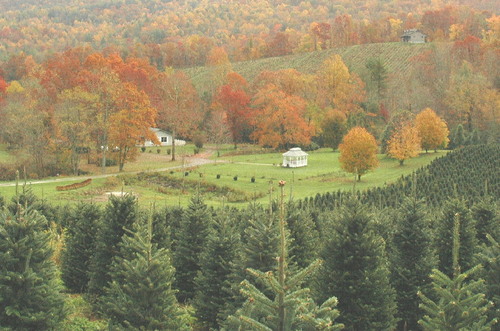Christmas Trees - From The Farm To Your Home

Christmas trees make up a $100 million-dollar per year industry in North Carolina. Beginning with a few farmers in the mid 1950s, the industry has grown to around 2,000 Christmas tree growers. The North Carolina Christmas tree industry has grown to the point where it is now ranked second in the nation in the number of trees harvested.
Early Christmas Trees in America
Christmas trees have not always been a part of celebrating Christmas. It can't be known for sure who was responsible for putting up the first Christmas tree, but some historians believe that even the Egyptians and Romans used some variety of an evergreen tree to decorate their homes in late December. It is generally accepted that the first use of a tree as part of the Christian Christmas celebration occurred over 400 years ago by the Germans.
The Christmas tree was introduced in America by the Hessian mercenaries being paid to fight for the British during the Revolutionary War. In 1804, soldiers stationed at a fort near Chicago carried trees to their barracks at Christmas.
In 1842, a German named Charles Minnegerode started the custom of decorating Christmas trees in Williamsburg, Virginia. His tree was described as being decorated with lit candles, popcorn, and nuts. By the early 1900s, one out of every five American families decorated a tree at Christmas. By 1930, the tree had become a standard part of the American Christmas.
The Christmas Tree Farm
Christmas trees are grown on farms and shipped around the country to retail lots. It takes several years of hard work to produce a tree that is just right to become a Christmas tree. Christmas trees begin their life in a nursery, where seeds are taken from cones of mature trees, planted, and covered with straw. They are covered with a shade cloth to prevent them from being damaged by frost or the sun. After about 3 years, a Fraser Fir tree is big enough to be moved to beds for further growth. In the beds, they can grow without competing with larger trees for sun and water. After about 2 years, the trees are normally strong enough to be transplanted into the field.
During the seven to eight years the trees remain in the field, the grower will undertake the task of shaping them. After a tree reaches a height of three feet, it is sheared for the first time. During this process, the top of the tree is cut back. By slowing the upward growth, the tree will tend to branch out more quickly. As it branches out, the grower will try to shape the tree by trimming the branches to give it a fuller appearance. During this period, the grower also has to be mindful of pest control, erosion, and protecting the soil from loss of nutrients.
When harvest time finally arrives, the grower ties colored ribbons on the trees. The color of the ribbons identifies the height of the tree. An entire field is not normally ready for sale in the same year. It may takes 2 - 4 years before a field is cleared and ready for new trees to be planted.
The trees are then cut and bundled during the bailing process. A machine ties them in twine for easier shipment. They are then loaded on trucks and shipped to lots all across the country. From start to finish, the process of growing one of these beautiful trees that winds up in your home at Christmas can take from 12 - 15 years.








